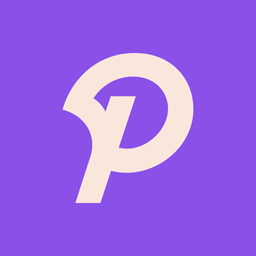Mastering Cold Email Lead Generation in 2024: A Complete Guide
Looking to get more leads in 2024? Whether you're just starting out or looking to up your cold emailing game, this guide has something for you!
— Propoze
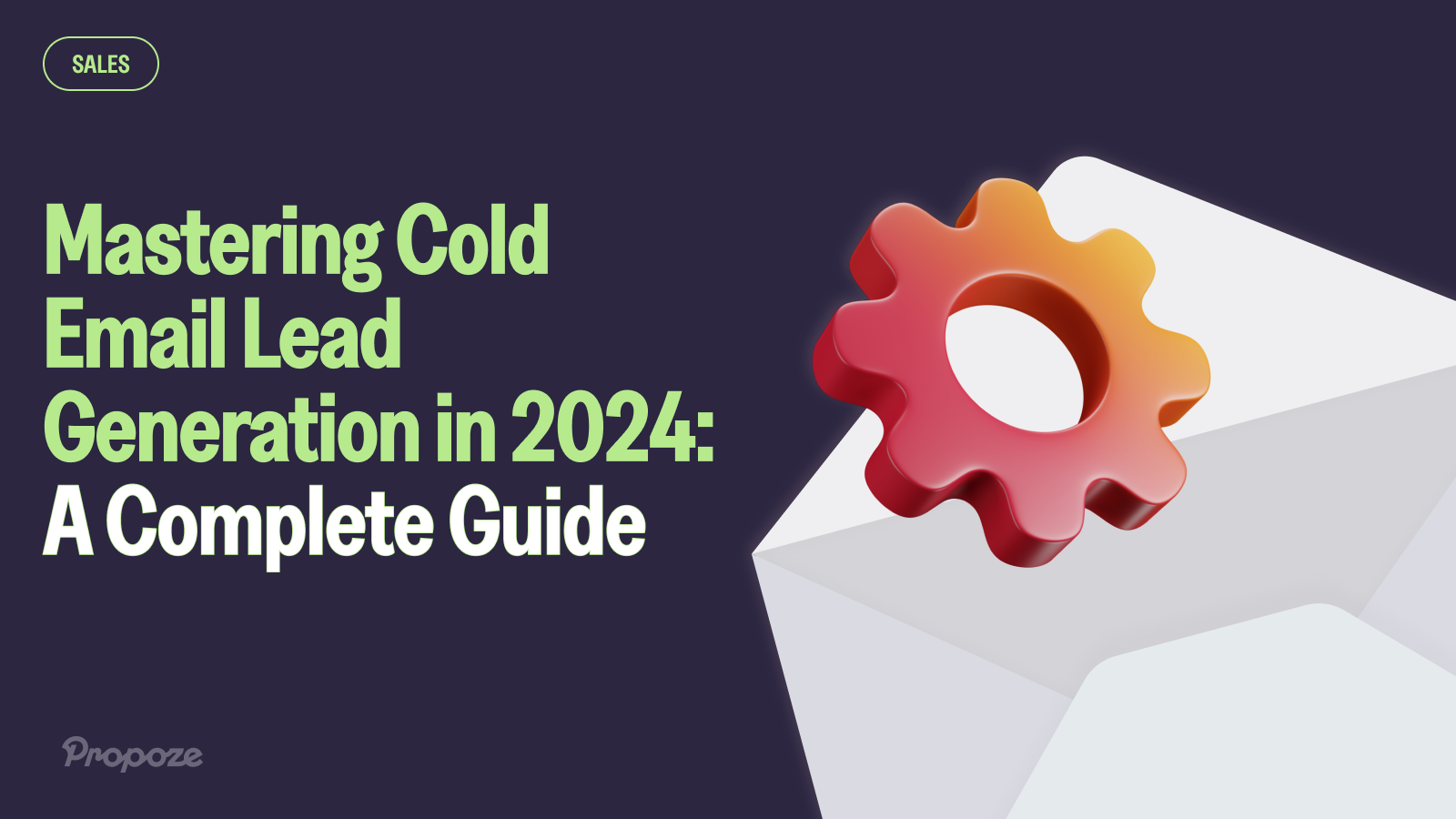
Cold emailing could be your ticket to success. It’s straightforward, cost-effective, and when done right, can open doors to valuable business opportunities.
This guide is your roadmap to cold emailing. We're going to talk about how tools like Saleshandy, QuickMail, and SurveySparrow can help you send emails that get replies.
We'll introduce you to the Frost Fire Framework, a simple yet powerful strategy for writing emails people actually want to read.
Plus, we’ll share tips on creating emails that stand out and how to ensure they land in the right inbox.
Ready to see how? Let’s get into it.
Key Takeaways
- Getting the basics of cold emailing right and knowing why it's better than other ways to get leads is key for today's marketers.
- Finding out who you should be emailing and having the right tools in your kit are essential steps for cold email success.
- The Frost Fire Framework (FFF) gives you a smart plan for cold emailing, along with tried-and-true tips to make your emails hit the mark.
- Writing emails that are tailored to the reader, offer real value, and have eye-catching subject lines are crucial for getting replies and catching the interest of potential customers.
- Using advanced strategies like breaking down your audience into groups, using automation smartly, and making sure your emails actually get delivered are important for sending cold emails at a larger scale.
Understanding cold emailing
Essentially, a cold email is your initial hello to potential leads, sent without any prior contact.
Think of it as a more direct, one-on-one conversation starter, unlike the broad and impersonal nature of traditional advertising.
It's a strategic tap on the shoulder in a world where inboxes are battlegrounds for attention.
- Personalization: Tailoring the message to the recipient.
- Targeting: Focusing on individuals who are most likely to benefit from your offer.
- Value proposition: Clearly stating what you can do for them.
Cold emailing stands out because it allows for a level of precision and personalization that other lead gen strategies often miss. It's not about casting a wide net; it's about finding the right fish with the right bait.
Remember, the goal isn't just to get your message out there; it's to get it read, and more importantly, acted upon.
That's why understanding the variations of cold emailing is crucial. It's not spam—it's a calculated approach to business growth.
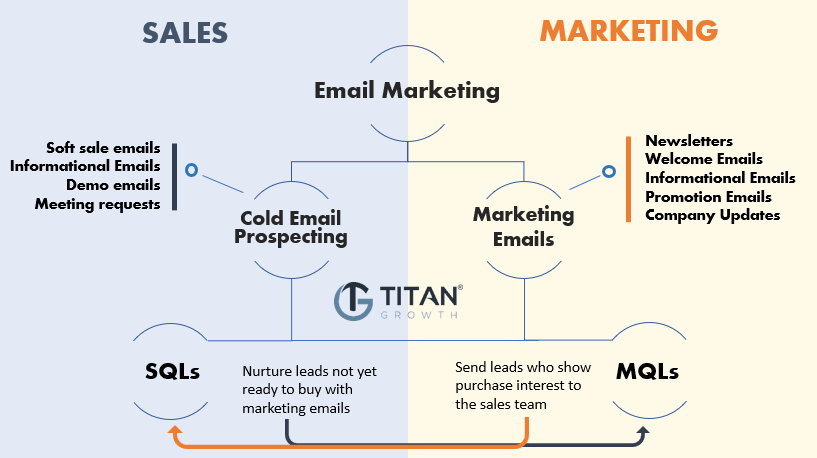
Why cold email beats other lead gen strategies?
When it comes to cold email outreach, it's all about playing the long game with precision and personal touch.
Unlike other strategies, lead generation cold email allows you to directly reach out to potential clients without the noise of crowded platforms.
Here's the scoop:
- Directness: Cold emails land right in the prospect's inbox, making your message hard to miss.
- Cost-effectiveness: It's a budget-friendly approach, especially for startups and small businesses.
- Scalability: With the right tools, you can reach an expansive audience without losing the personal touch.
The best cold email approach generating leads is one that's tailored to your audience. B2B lead generation cold emailing, for instance, thrives on industry-specific insights and value propositions.
And when it comes to cold emailing for lead generation, the key is consistency and follow-up. Remember, cold emails for lead generation are more than just a shot in the dark; they're a strategic arrow aimed right at your target.
Identifying your ideal target audience
Before you press 'send' on your next email, it's crucial to know who will read it. Picking the right audience is your first step, similar to plotting your route before a trip.
Think about who needs what you're offering. Is it small business owners, top executives, or maybe tech fans?
Are they small business owners, C-level executives, or perhaps tech enthusiasts?
- Define your target audience
- Consider demographics, firmographics, and psychographics
- Analyze past successes for patterns
With a clear idea of who you're talking to, you can write messages that really speak to them. A personalized email that addresses their pain point is far more effective than a one-size-fits-all message.
Make sure to gather a list of top-notch contacts; focus on quality contacts to generate leads effectively.
And don't forget to build a High-Quality Prospect List; quality over quantity always wins the race.
Using a well-crafted cold email template can be a solid starting point, allowing you to tweak and customize messages that connect directly with your audience’s needs.

Essential tools for effective cold email campaigns
In cold emailing, the tools you use really matter. Picking the right software is key for organizing contacts, sending emails automatically, and keeping track of replies.
Here's a quick rundown of some top tools that are making waves in 2024:
Saleshandy
A powerhouse for email tracking and scheduling, offering detailed analytics to refine your campaigns.
Features: Saleshandy shines with features like email sequence automation, link tracking, and integration with popular email platforms. Its analytics dashboard is a standout, offering deep insights that inform strategic decisions.
Comparison: Unlike QuickMail, which emphasizes omnichannel outreach, Saleshandy focuses more on email-centric features. It's more detailed in analytics compared to Lemlist but lacks Lemlist's creative personalization options.
Pros:
- Robust email tracking: Offers real-time notifications when emails are opened, providing insights into recipient engagement.
- Advanced scheduling: Enables sending emails at optimal times for different time zones.
- Detailed analytics: Helps refine campaigns with data on open rates, click-through rates, and reply rates.
Cons:
- Learning curve: New users might find its plethora of features overwhelming.
- Cost: Can be pricey for startups or small businesses on a tight budget.
Pricing
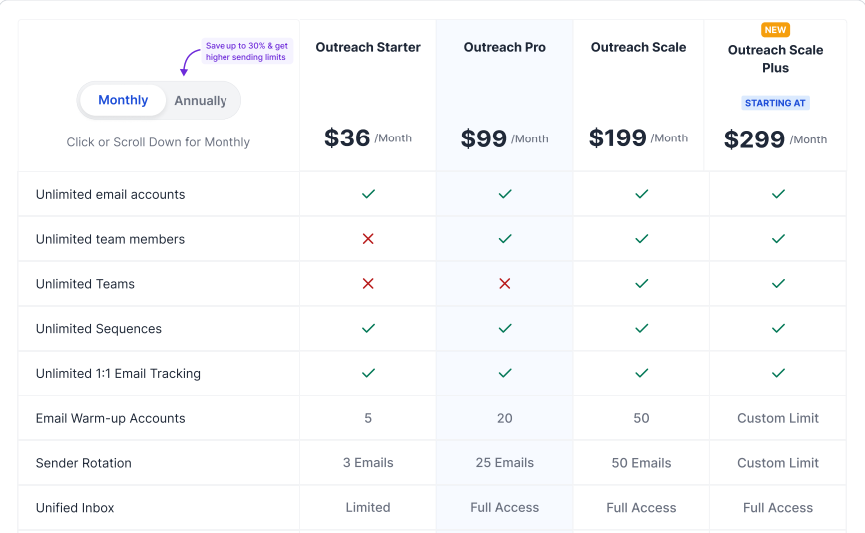
QuickMail
Known for its omnichannel outreach capabilities, QuickMail allows you to design, deliver, and manage high-performing campaigns with ease.
Features
QuickMail's strength lies in its ability to manage campaigns across different platforms seamlessly. It also boasts auto follow-up features and the ability to personalize emails in bulk.
Comparison
QuickMail stands out for its omnichannel approach, distinguishing it from more email-focused tools like Saleshandy and Woodpecker. However, it might fall short in analytics and CRM integration when compared to Saleshandy.
Pros:
- Omnichannel outreach: Supports reaching out via multiple channels for a cohesive campaign.
- Ease of use: User-friendly interface that simplifies campaign management.
- Automation: Streamlines the process of designing and delivering campaigns.
Cons:
- Limited analytics: While solid, its analytics might not be as comprehensive as Saleshandy's.
- Integration: May lack some integrations with CRM systems compared to others.
Pricing
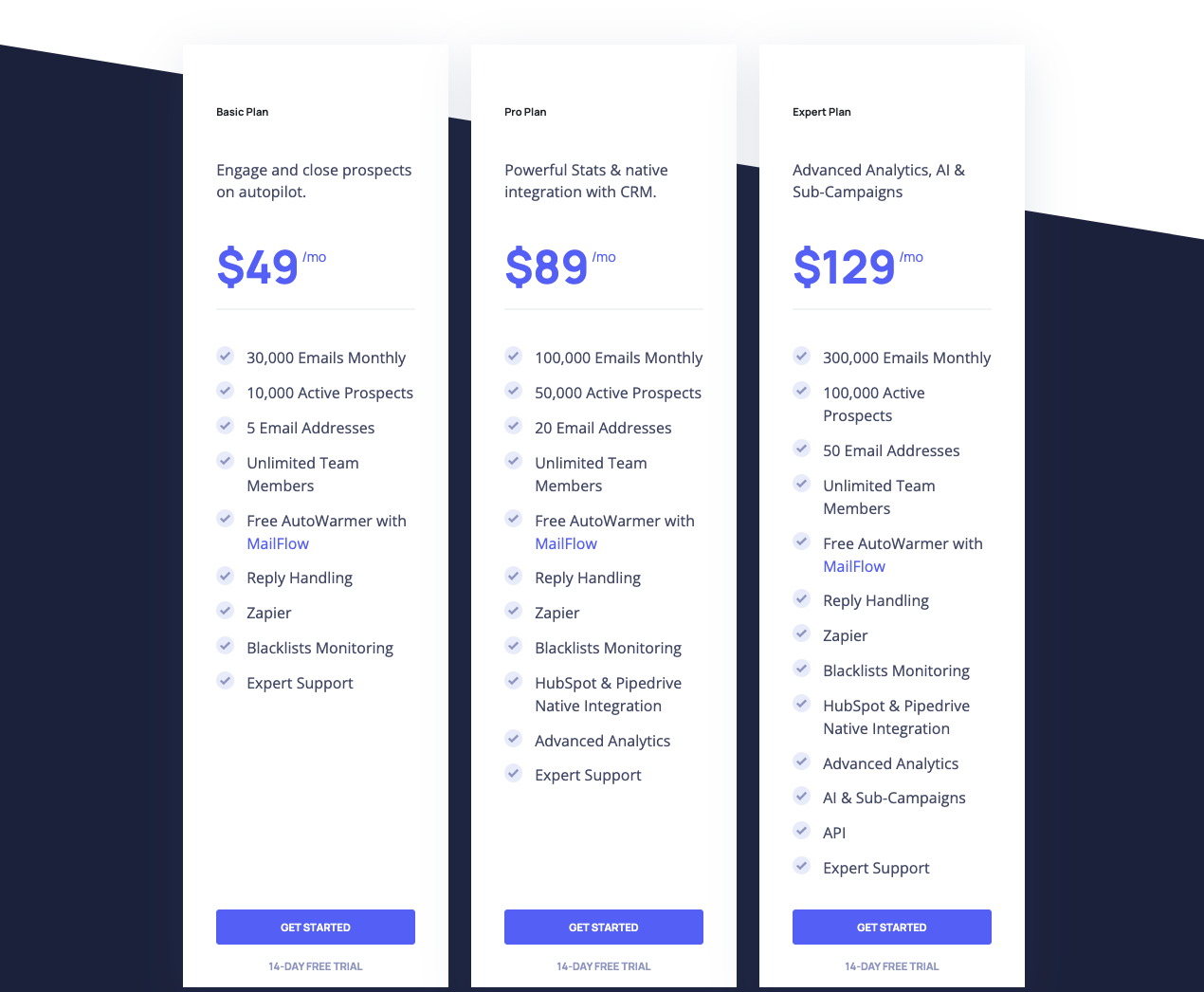
SurveySparrow
Not just for surveys, this tool helps you engage with leads through interactive emails that can skyrocket response rates.
Features
SurveySparrow excels with features that make surveys engaging, such as varied question types, logic branching, and customizable designs. It also allows for embedding surveys directly into emails.
Comparison
It’s unique on this list for its survey-first approach, offering a different kind of engagement tool compared to the direct email marketing focus of Saleshandy and QuickMail.
Pros:
- Engagement: Interactive email capabilities increase engagement and response rates.
- Versatility: Beyond surveys, it's effective for lead nurturing and feedback collection.
- User-friendly: Easy to create and deploy interactive emails and surveys.
Cons:
- Focus on surveys: While versatile, its primary strength in surveys might not fit all email campaign needs.
- Analytics: Offers useful insights, but might not be as in-depth for email-specific campaigns.
Pricing

Woodpecker
Ideal for B2B companies, Woodpecker automates and personalizes your emails at scale.
Features
Woodpecker is strong in automating and personalizing cold emails for B2B audiences, with features like AI-driven personalization, detailed campaign analytics, and robust CRM integration.
Comparison
While Woodpecker is similar to Saleshandy in its email automation capabilities, it’s more B2B-oriented with features specifically designed for those campaigns.
Unlike SurveySparrow, its focus is less on engagement through interactivity and more on personalized communication.
Pros:
- B2B focused: Tailored features for B2B email campaigns, including personalization and automation.
- Integration: Easily integrates with CRM and other tools, enhancing workflow.
- Personalization at scale: Automates personalized emails effectively, maintaining a personal touch.
Cons:
- B2B limitation: Its focus on B2B might not suit all types of businesses, especially direct-to-consumer brands.
- Pricing: Its pricing structure might be a bit steep for smaller operations.
Pricing
Woodpecker's cold emailing tool offers a starting price of $29, which increases based on the number of prospects you plan to contact.
For instance, you'll pay $49 for up to 1000 contacted prospects, while the cost for up to 2000 prospects is $67. Overall, it's a customizable and beneficial plan.
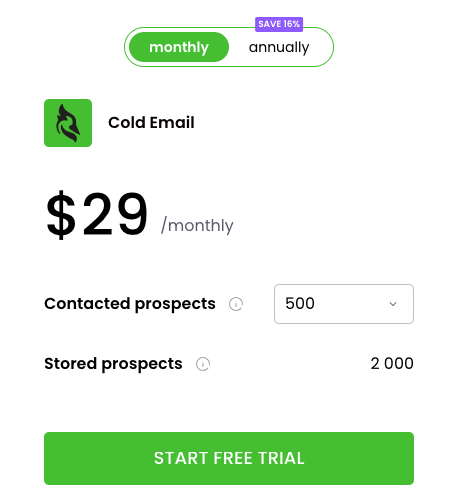
Lemlist
Tailored for sales and marketing pros, Lemlist brings a creative touch to cold emailing with personalized images and videos.
Features
Lemlist stands out for its unique approach to personalization, allowing users to create dynamic and visually engaging emails.
Features like campaign tracking, A/B testing, and integration with tools like LinkedIn make it a versatile choice.
Comparison
Lemlist offers a unique proposition with its focus on visually creative emails, setting it apart from the more traditional, text-focused email approaches of Saleshandy and Woodpecker.
While QuickMail emphasizes omnichannel outreach, Lemlist excels in making emails visually stand out.
Pros
- Creative personalization: Enables the use of personalized images and videos to capture attention.
- Community and support: Offers a vibrant community and strong customer support.
- Ease of campaign creation: Intuitive interface makes creating and launching campaigns straightforward.
Cons:
- Creativity focus might overwhelm: For those seeking simple email solutions, its emphasis on creative content might be too much.
- Analytics: Comprehensive, but could be more intuitive for quick insights.
Remember, the best tool is the one that fits your specific needs and integrates seamlessly with your workflow. Don't be afraid to test different options to find your perfect match.
Pricing
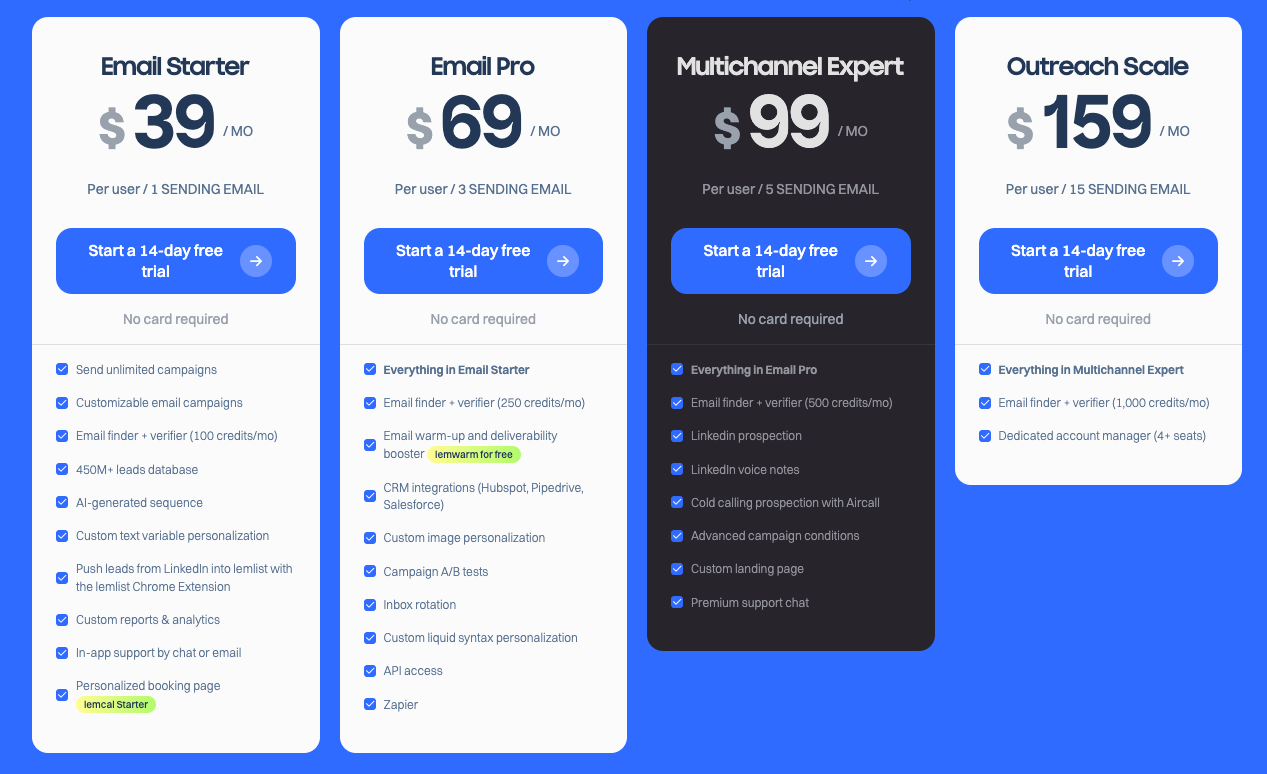
Creating your cold email strategy

The Frost Fire Framework (FFF) explained
The Frost Fire Framework (FFF) is your secret weapon in the cold email battlefield. Think of it as a strategic blueprint that guides you through the icy waters of initial contact and into the warm embrace of a potential lead's inbox.
It's all about striking the perfect balance between precision and personalization.
- Identify: Start by pinpointing who really needs to hear your message. This isn't just about casting a wide net; it's about finding the right fish.
- Engage: Next, craft a message that speaks directly to their needs. This isn't your average 'spray and pray' approach.
- Nurture: Follow up with value, not just a sales pitch. Keep the conversation going and the interest hot.
- Convert: Finally, when the moment's right, turn that warm lead into a blazing opportunity.
Remember, the FFF isn't a one-size-fits-all. It's a flexible framework that adapts to your unique business and audience.
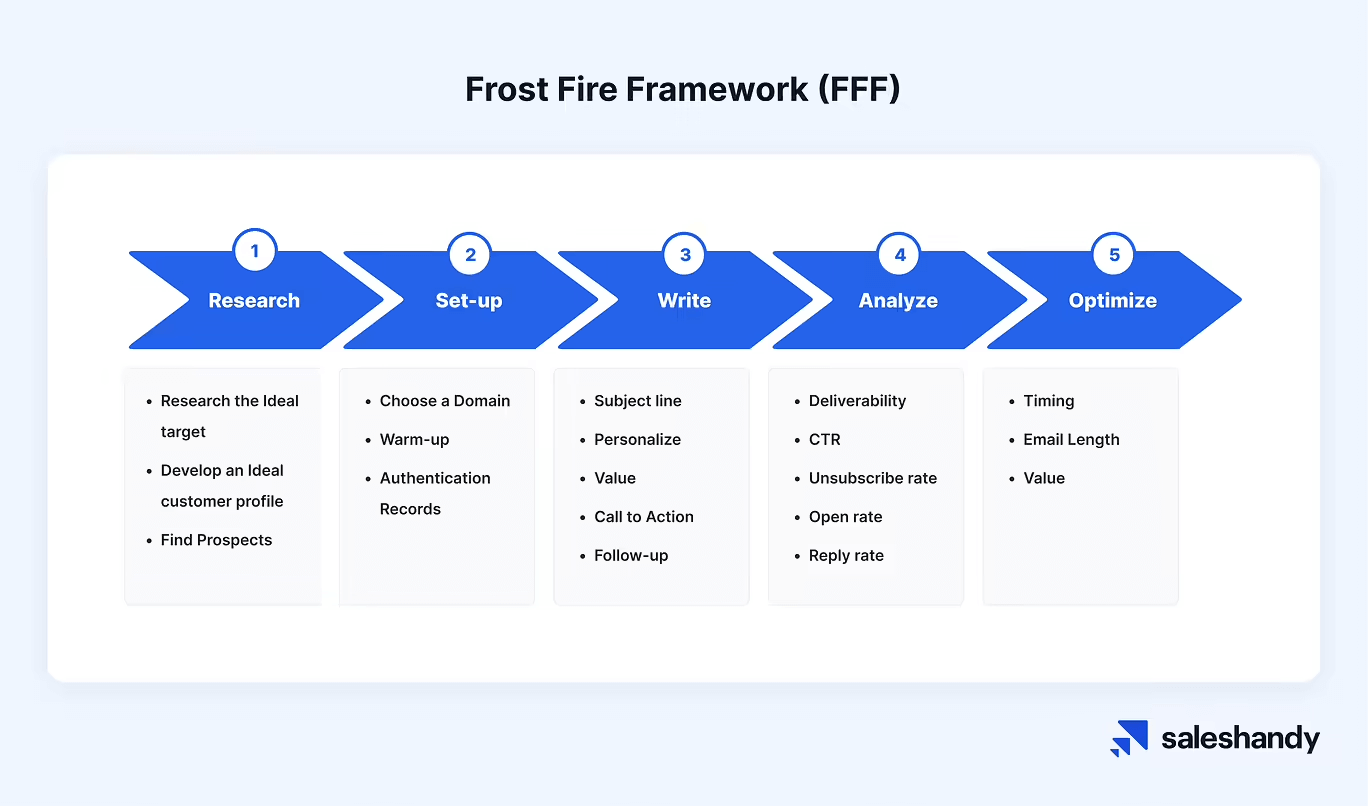
By using tools like Leadfeeder for lead prospecting, you're not just shooting in the dark; you're a sniper with a mission.
And with the help of sales productivity software like DocSend and Lavender, you can enhance your email outreach to ensure your message hits the mark every time.
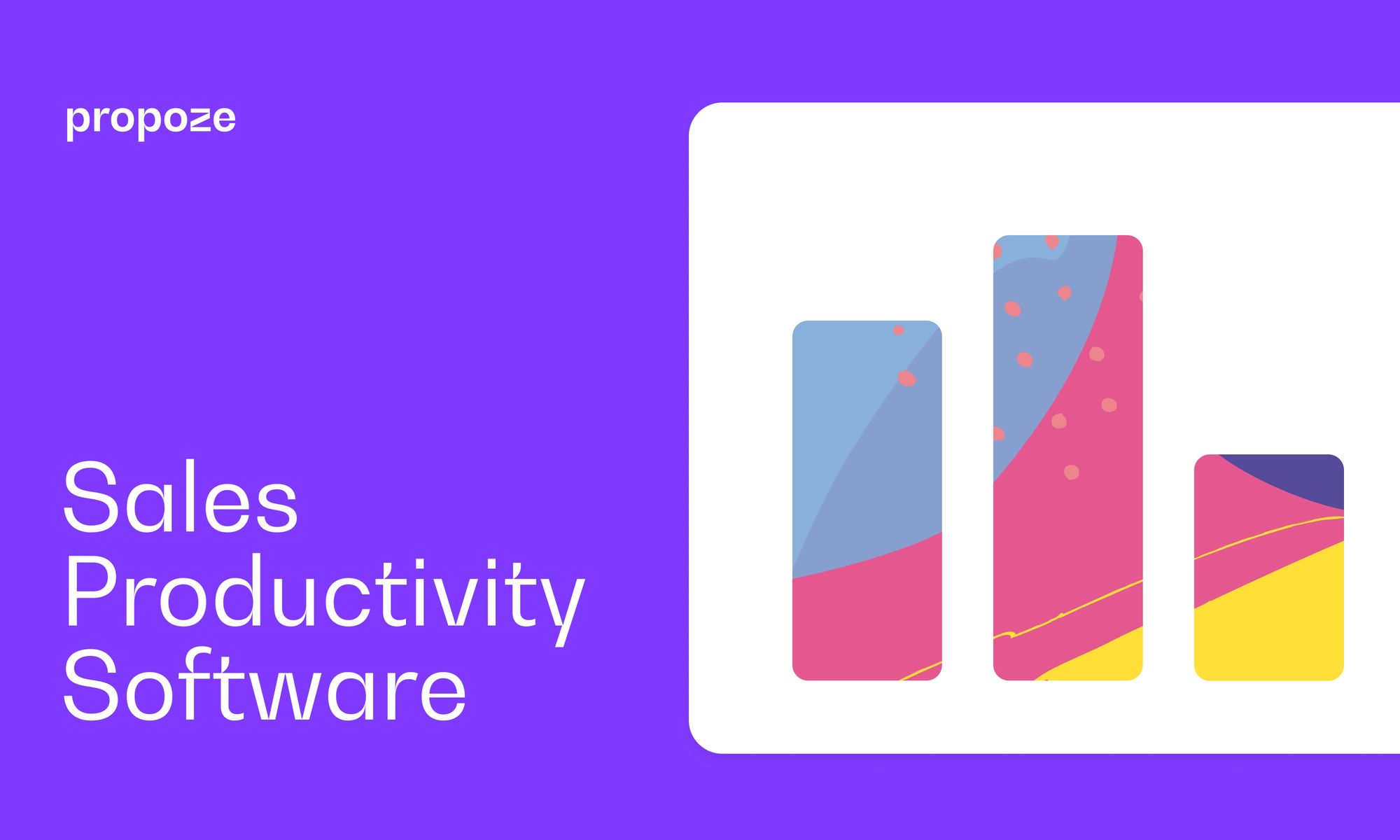
How to make maximum impact?
To truly master cold emailing, you need to hone your approach with best practices that have been proven to work.
Start by setting clear goals and objectives for your campaign. What do you want to achieve?
More demos booked, a higher response rate, or perhaps a specific number of new leads?
As you craft your cold email, leverage a sales email template that speaks to your audience's interests and needs, embedding your company name to foster familiarity.
Equally important is incorporating specifics about your prospect's company to personalize your message further. And remember, scheduling follow-up emails is pivotal to maintain engagement.
Remember, the key to a successful cold email campaign is persistence and refinement. Don't be discouraged by low response rates at first; use them as a learning tool to improve your emails.
Avoid the common pitfalls that many fall into. For instance, a lack of clarity and organization can doom your campaign before it even begins.
Keep your emails focused and centered on the client's needs, much like how Propoze helps create effective sales proposals.
By doing so, you'll ensure that your message is not only heard but also acted upon.
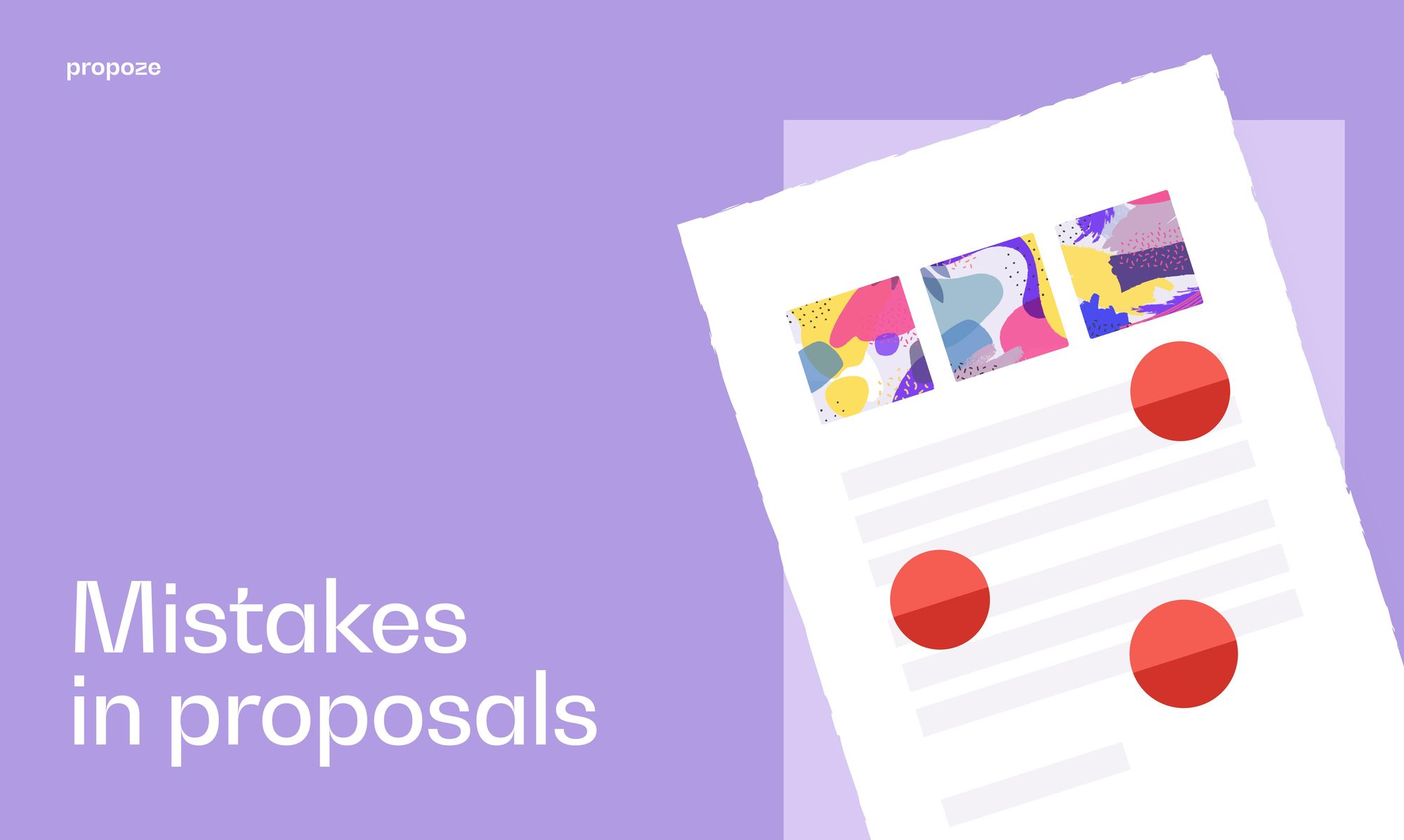
Writing emails that get a response
Let's cut to the chase: your subject line is the gatekeeper of your cold email. It's what stands between your message and the recipient's attention.
Make it count. Crafting a subject line that piques curiosity without being spammy is an art form. Here's a quick rundown on how to nail it:
- Be clear and concise: Your subject line should give a hint of what's inside, without being too vague or too detailed.
- Spark interest: Use action verbs, questions, or teasers that make the recipient want to learn more.
- Personalize: Whenever possible, include the recipient's name or a relevant detail that shows the email isn't just another blast.
Remember, the goal is to get your email opened, not just delivered. Your subject line is your first impression—make it a strong one.
Steer clear of using all caps, too much punctuation, or making promises you can't keep. Focus instead on building a real connection right away.
With tools like Saleshandy and QuickMail, you can A/B test different subject lines to see what resonates best with your audience.
And don't forget, a touch of personalization can go a long way—mentioning a recent blog post or a shared interest can be the difference between a click and a pass.
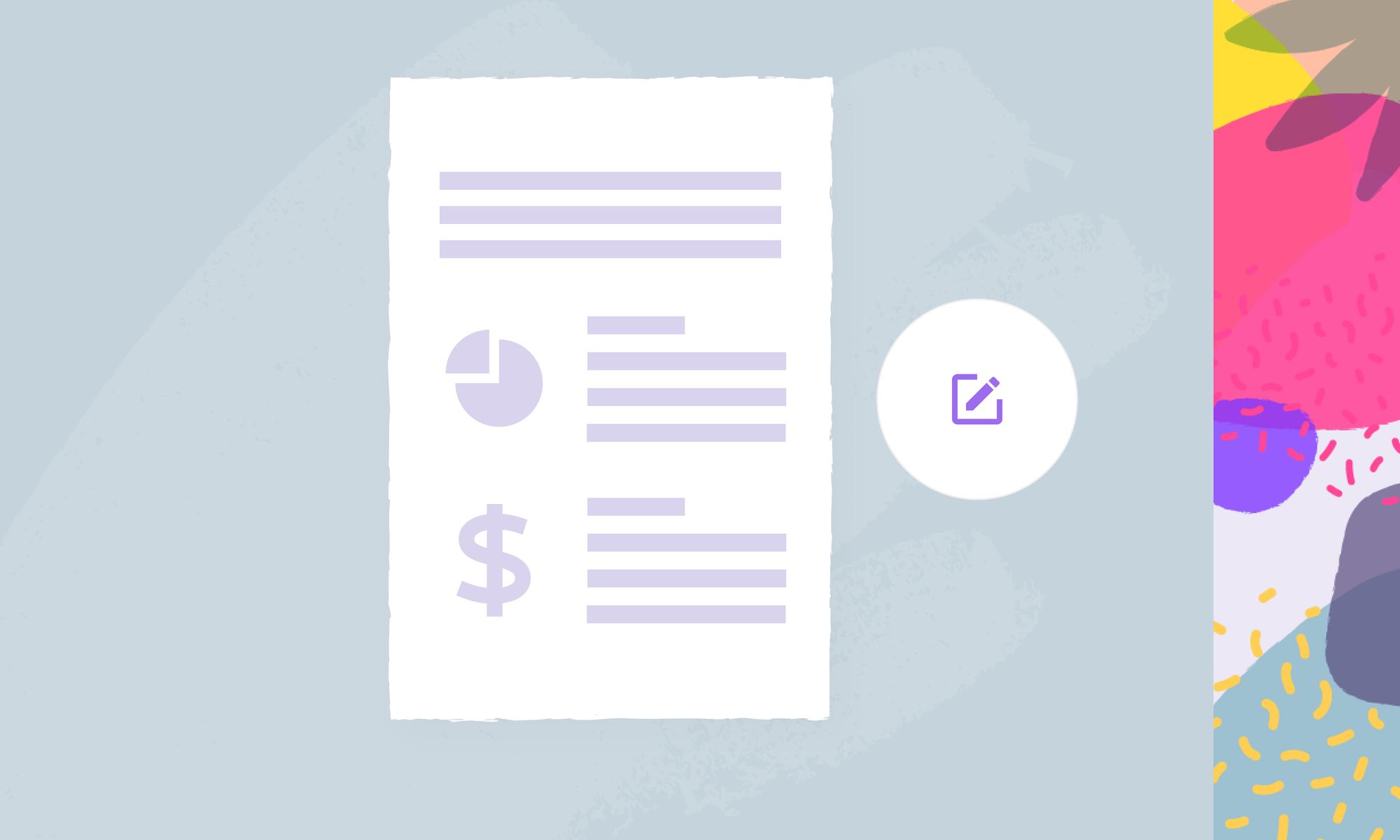
The art of personalization
Personalization is the secret sauce that can transform your cold emails from snooze-fests into compelling reads. It's all about making a connection that feels genuine and tailored to the recipient.
But don't confuse personalization with just slapping a first name at the top of your email. It's deeper than that.
- Research your recipient's business and mention a recent achievement.
- Reference a mutual connection if you have one.
- Include a relevant detail that shows you've done your homework.
Personalization is not just a buzzword; it's a commitment to understanding and addressing the unique needs of your recipient.
Remember, the key to an effective personalized cold email is balancing personalization with professionalism.
You want to ensure your message resonates with the recipient's needs and stands out in their inbox.
With the rise of AI-powered personalization tools, you can shift from customer support to customer success, enhancing experiences and focusing on sales process efficiency.
How to create value and follow-up effectively?
Creating value in your cold emails is the cornerstone of a successful campaign. Always put your prospects at the center of your pitch.
It's not just about selling your product; it's about solving their problems. Find out what keeps them up at night and offer a solution.
When following up, remember that timing is everything. Space out your communication to avoid overwhelming your prospect. A well-timed follow-up can reignite interest and show your dedication without being pushy.
Here's a quick checklist to ensure your follow-ups hit the mark:
- Personalize each follow-up to the recipient's situation.
- Mention any previous interactions or points discussed.
- Offer additional value or insights with each message.
- Set a reminder for yourself to follow up if you don't receive a response.
By providing value upfront and following up effectively, you're not just another email in the inbox; you're a potential partner in solving their challenges.
Using cold email templates to your advantage
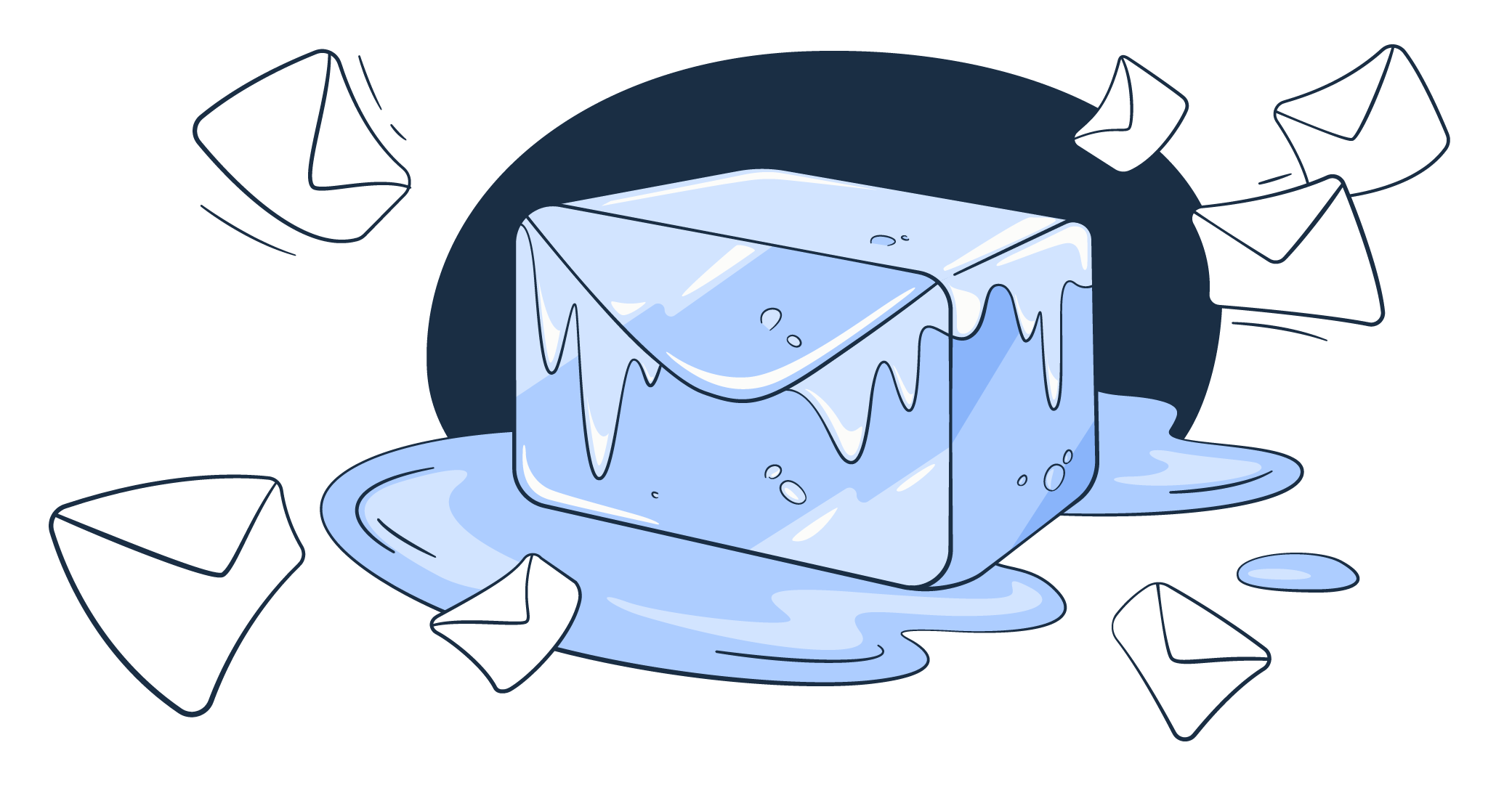
Cold email templates for various scenarios
Feel like your cold emails are going unnoticed? Set of 20 cold email templates can turn that around, improving your lead generation.
These templates are designed to cater to a variety of scenarios, ensuring you always have the right words at your fingertips.
Remember, the key to a successful cold email is not just in the template, but in how you adapt it to your brand and the unique needs of your prospect.
Here's a sneak peek into the types of templates you'll find:
- Introduction emails: Break the ice with a warm hello.
- Follow-up emails: Keep the conversation going.
- Value proposition emails: Showcase what you can offer.
- Problem-solution emails: Address their pain points directly.
Each template is a starting point. Customize them to reflect your brand's voice and the specific interests of your target audience.
And don't forget the tips for successful discovery calls: use these templates as a foundation to ask open-ended and personalized questions that guide the conversation based on customer responses.
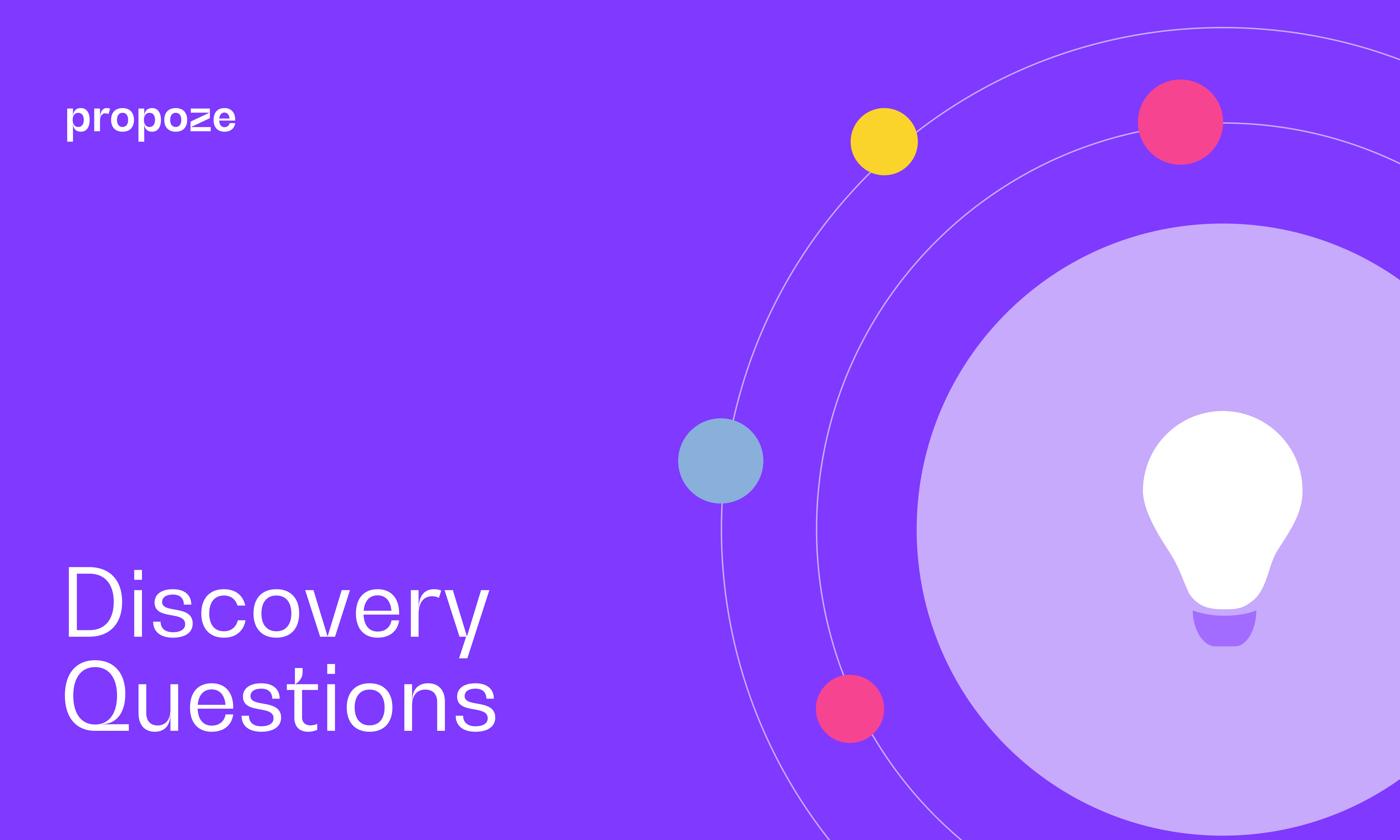
Customizing templates for your brand
While cold email templates can kickstart your outreach, remember that customization is key to standing out. Think of templates as a canvas; your brand's unique colors and strokes will turn it into a masterpiece.
Here's how to infuse your brand's personality into every email:
- Start with the template's structure but tweak the language to match your brand's voice.
- Replace generic greetings with ones that resonate with your audience.
- Incorporate your brand's value proposition clearly and concisely.
- Ensure your call-to-action reflects your brand's approach, whether it's casual or formal.
Customization doesn't mean overhauling the entire template. It's about making strategic tweaks that align with your brand's identity and resonate with your audience.
Remember, the goal is to make each recipient feel like they're having a one-on-one conversation with you, not just receiving another generic sales pitch.
By customizing templates, you're not only increasing the relevance of your message but also building a stronger connection with your prospects.
Advanced cold emailing techniques

How to do audience segmentation
Think of your audience as a mosaic—unique pieces that, when correctly grouped, create a complete picture. Segmentation is the art of identifying these pieces and tailoring your message to resonate with each cluster.
By doing so, you're not just shouting into the void; you're engaging in a meaningful conversation.
- Demographic Segmentation: Age, location, job title
- Behavioral Segmentation: Purchase history, product usage, website interactions
- Psychographic Segmentation: Interests, values, lifestyle
Segmentation isn't just about knowing who your audience is; it's about understanding how they behave and what they value.
This involves segmenting your list based on consumer behavior, such as purchase history, product usage, and previous interactions with your website or emails.
By segmenting your audience, you're preparing the ground for successful demos, sales proposals, and ultimately, a robust B2B sales pipeline. It's the first stage in a journey that's both strategic and personal.
Remember, the more granular you get with your segmentation, the more personalized and effective your cold emails will be. It's a game-changer that can significantly boost your email campaign's performance.
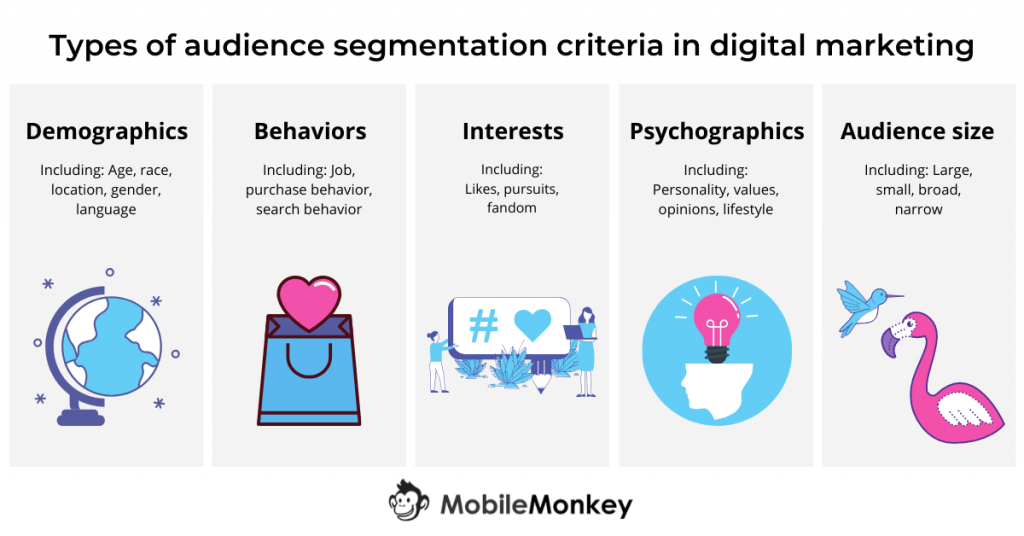
Overcoming email delivery obstacles
The days of sending the same email to everyone are over. Now, experts use tools like Saleshandy to send targeted messages in every campaign.
Advanced personalization isn't just about slapping a first name at the top of an email; it's about crafting messages that resonate on a personal level, making each recipient feel like the only one in the room.
- Understand your tools: Saleshandy and others offer a suite of features beyond basic automation.
- Dive into data: Use analytics to tailor your approach for different segments.
- Test and tweak: Constantly refine your emails based on performance metrics.
With the right tools, you can automate not just follow-ups but the entire conversation, keeping it as natural as if you were typing each response by hand.
Remember, the goal is to make meaningful connections. By leveraging the bi-directional native CRM integrations and personalized features of platforms like Saleshandy, you're not just sending emails; you're building relationships.
Navigating email deliverability challenges
Let's face it, even the most well-crafted cold email is useless if it lands in the spam folder. Navigating email deliverability challenges is crucial to ensure your message reaches the inbox. Here are a few actionable tips to keep your emails flying straight to your prospects:
- Warm up your email account gradually by sending a few emails and slowly increasing the volume.
- Use reputable email service providers like Saleshandy or QuickMail to enhance deliverability.
- Test your email copy for spam triggers before hitting send.
- Maintain a clean email list by regularly removing unengaged subscribers.
Remember, consistent deliverability checks are your best defense against the dreaded spam folder. By staying vigilant and proactive, you can significantly improve your email's chances of making a memorable inbox entrance.
According to the 'Ultimate Guide to Cold Email Deliverability - QuickMail', it's essential to follow a step-by-step process, from warming up your account to testing your email copy.
And don't forget the '14 Deliverability Checks Before Sending Your Cold Email Campaign'—a checklist that can elevate your deliverability game.
Wrapping it up
As we've talked about cold emailing, we've seen it's a solid way to get leads, not just guesswork.
Using the right strategy, tools like Saleshandy, QuickMail, and SurveySparrow, along with a bit of creativity, can really make your cold emails hit the mark with your future customers.
The Frost Fire Framework guides you, making your emails feel like a warm, personal hello, and those follow-up messages? They're like your memorable second act that people won't forget.
So, whether you're setting up your very first email campaign or tweaking your latest one, keep these tips ready to go. You'll see how they make your cold emails stand out online.
Cheers to your success and to the new connections you'll make in 2024!
Frequently Asked Questions
What is cold emailing and why is it significant for lead generation in 2024?
Cold emailing is the practice of sending unsolicited emails to potential customers who have had no prior contact with the sender.
It's significant for lead generation in 2024 as it allows businesses to reach out directly to potential leads, offering a personalized approach that can scale effectively with tools like Saleshandy, QuickMail, and SurveySparrow.
How does the Frost Fire Framework (FFF) enhance cold email strategy?
The Frost Fire Framework (FFF) by Saleshandy is a strategic approach to cold emailing that focuses on timing, relevance, and personalization to ignite interest and engagement from recipients.
It helps in crafting emails that resonate with the target audience, thereby increasing the chances of getting a response.
What are some best practices for writing cold emails that get responses?
Best practices for writing cold emails include crafting compelling subject lines, personalizing the content, providing clear value propositions, and following up effectively.
QuickMail emphasizes the importance of personalization and timely follow-ups to maintain engagement and improve response rates.
How can SurveySparrow's email templates be utilized for cold emailing?
SurveySparrow offers a range of versatile email templates that can be used for various cold emailing scenarios.
These templates are designed to save time and provide a starting point for customization, ensuring that each email feels personal and relevant to the recipient while maintaining brand consistency.
What advanced techniques can be used to improve cold email campaigns?
Advanced techniques for improving cold email campaigns include segmenting your audience for more targeted messaging, leveraging personalization and automation tools for efficiency, and navigating email deliverability challenges to ensure your emails reach the inbox.
These techniques help in refining the approach and increasing the effectiveness of cold email lead generation.
How can marketers measure and optimize their cold email campaigns for success?
Marketers can measure and optimize their cold email campaigns by tracking key metrics such as open rates, click-through rates, response rates, and conversion rates.
Analyzing these metrics allows for the identification of areas for improvement and the optimization of campaign strategies for better ROI.
Additionally, staying informed about future trends and incorporating real-world examples can provide actionable insights for ongoing success.
